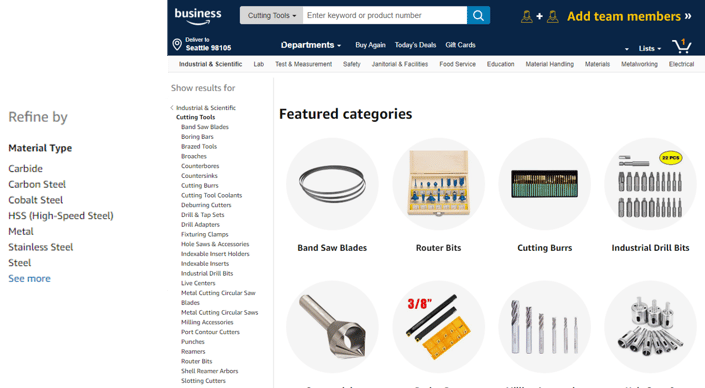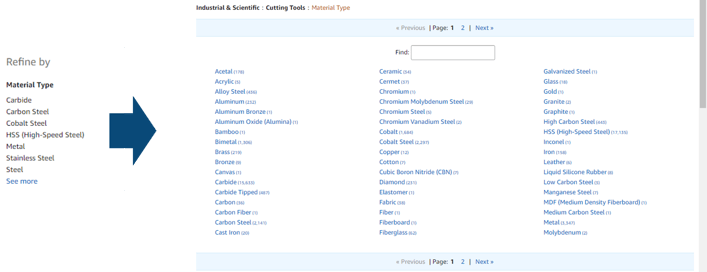In our last few blogs we’ve been focusing a lot on taxonomies and taxonomy design for ecommerce sites. In this blog we will shift gears a bit and talk about attributes - specifically, “global” attributes and the best practices for using them.
What are global attributes and how do they differ from other types of attributes?
On the other hand, global attributes are attributes that apply to all products across all categories. They are universal – often common in ERP systems and logistical in nature. For instance, how the item is sold, or shipped. They don’t describe inherent features of the item like product category attributes do.
Getting attributes right for each category is not an easy undertaking. So it could be tempting to just set up all attributes as global. After all, it does make things pretty flexible. You can load any attribute to any SKU that you load into your system. And, theoretically, then, if you do that well, from a governance perspective you are writing just one set of business rules that can check everything. But that is all just in theory. In the real world, such an approach ends up causing more problems than it solves.
Too many attributes slows growth and hurts data governance
We see this frequently. Where a company has defaulted to using global attributes for everything. We’ll be called in to “detangle” the mess of global attribution into a more category managed set of schemas. The first big problem is we see a lot of empty or “N/A” attributes where a particular attribute doesn’t apply to a given SKU. So one issue, right away, is all of those N/A’s take up precious space in your database that could be put to more productive use. We also see this provide data fill blindness. If the value is filled with a null value it can be hard to determine if the value is unnecessary for the product or if the data is necessary but not provided.
Another contributor to the mess is channel partners – who are sending you data – will start out trying to fill in as much as possible. In doing so, they will end up making a lot of inaccurate guesses leaving you with bad data. Eventually they will simply tire of filling in bogus attributes. The last thing your digital transformation initiative needs is frustrated channel partners. Ultimately, what started as a way to save time and effort turns into a bigger problem to fix later.
Examples of “good” and “not so good” global attributes
Global attributes are often set by some external party, like the government or standards organization. Another way to test if an attribute is suitable for global status is to ask if it can absolutely apply to any product consistently. Here are some “good” examples of global attributes:
- Brand Name
- Country of Origin
- Manufacturers Name
- Tax ID Number
- Hazmat Status
- Shipping Weight
There are some attributes that may seem on the surface to apply to most products that we sometimes see end up in the global group. For instance:
- Style
- Item Dimensions
- Material Type
- Application
The problem here is that the definitions for what goes into these attributes aren’t universal. What you mean by “style” and what someone else means by it can be different. And, style of light bulb would be described differently than style of, say, a set of safety glasses. Likewise, there are similar issues with “material” or “application.” Compare that to “country of origin.” No doubt on meaning there.
You also don’t want to make any attribute that is hyper-specific to a particular category global because it won’t apply to 90% of your products. Take “Flow Rate (at 20FoH)” which is very meaningful for pumps but doesn’t apply to other things like welding gloves.
Another type of attribute that doesn’t make sense as a global attribute are what we refer to as “either/or” attributes. “Finish” vs “Color” are good examples of this. Finish typically refers to metals, where the data would be terms like “brushed” or “bright”. Meanwhile, Color is more applicable to non metal items where the terms used are things like “red” or “yellow”. When both Finish and Color are available as attribute choices, without guidance, we see users or suppliers put the wrong type of data in each such that both attributes become meaningless. Some categories may have both options but since that is only applicable to specific product types that also adds to the non-global status. Here’s an example of a global attribute gone wrong. The attribute was “Material Type”. The original intention of the attribute was to capture the type of material that the products were made of. In this case, the items were cutting tools.
Somehow over time, as suppliers started entering their products into the system, instead of entering the material that the cutting tool was made of, people started entering what types of material the tool could cut. Look at how many filtering options, many of which make no sense, are available on Material Type.
What’s next?
How are you managing global attributes? Are they meeting the best practice recommendations? Our rules for proper use of global attributes:
- Assume all attributes are category attributes unless the data indicates that the attribute is suitable for global status
- If the best-case fill rate isn’t at least 90%, it’s not global
- Identify (and differentiate) attributes by their meaning, not their spelling
If you’re guilty of running fast and loose with global attributes, stop now and make a commitment to the following next step steps to gain control.
- Review existing global attributes (if any exist) to verify that they are being used globally
- If no global attributes exist today, use a “grassroots” identification approach to find likely candidates
- Develop business rules to automate data governance for global attributes to maintain data quality at scale
Finally, get expert help. This all sounds easy on paper, but one can see bad examples of this across eCommerce. Our team of digital commerce experts can help you put the principles into practice. Give us a shout.
WATCH the 15 Minute No B.S. recorded webcast: Power of Product Data Episode #5 – The Power and Peril of Global Attributes


